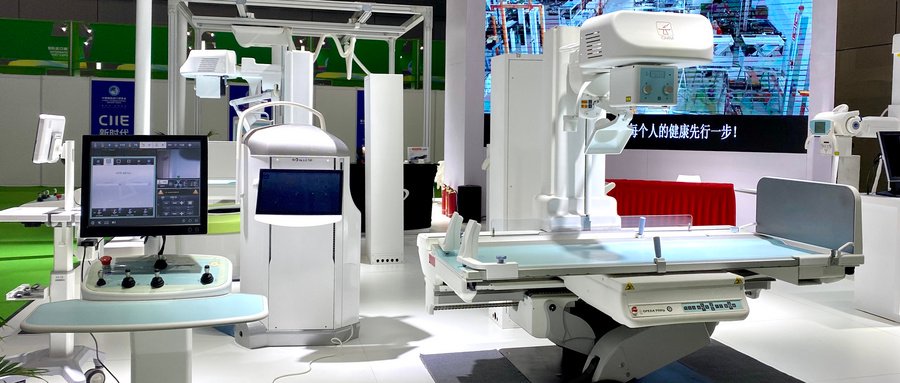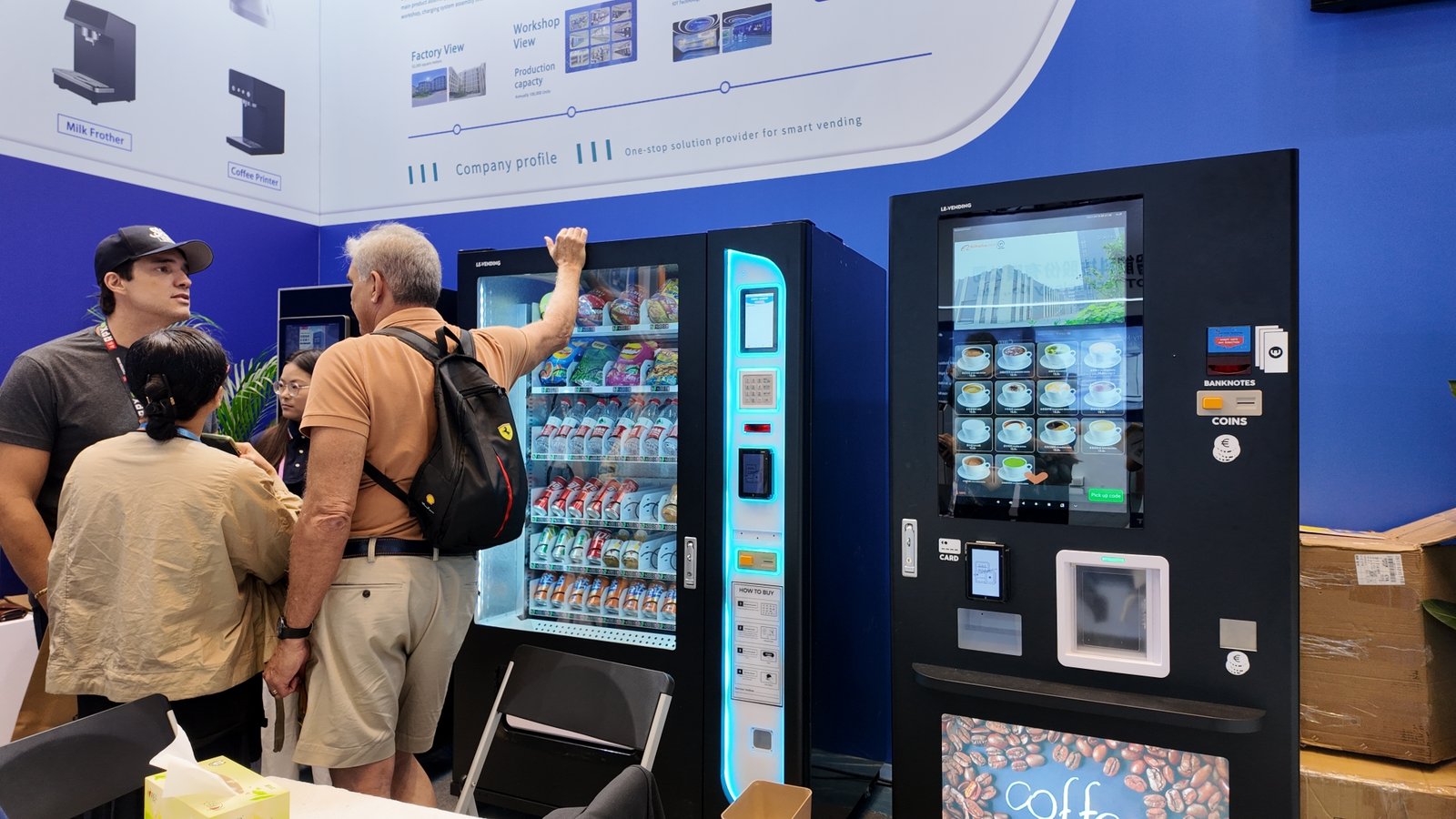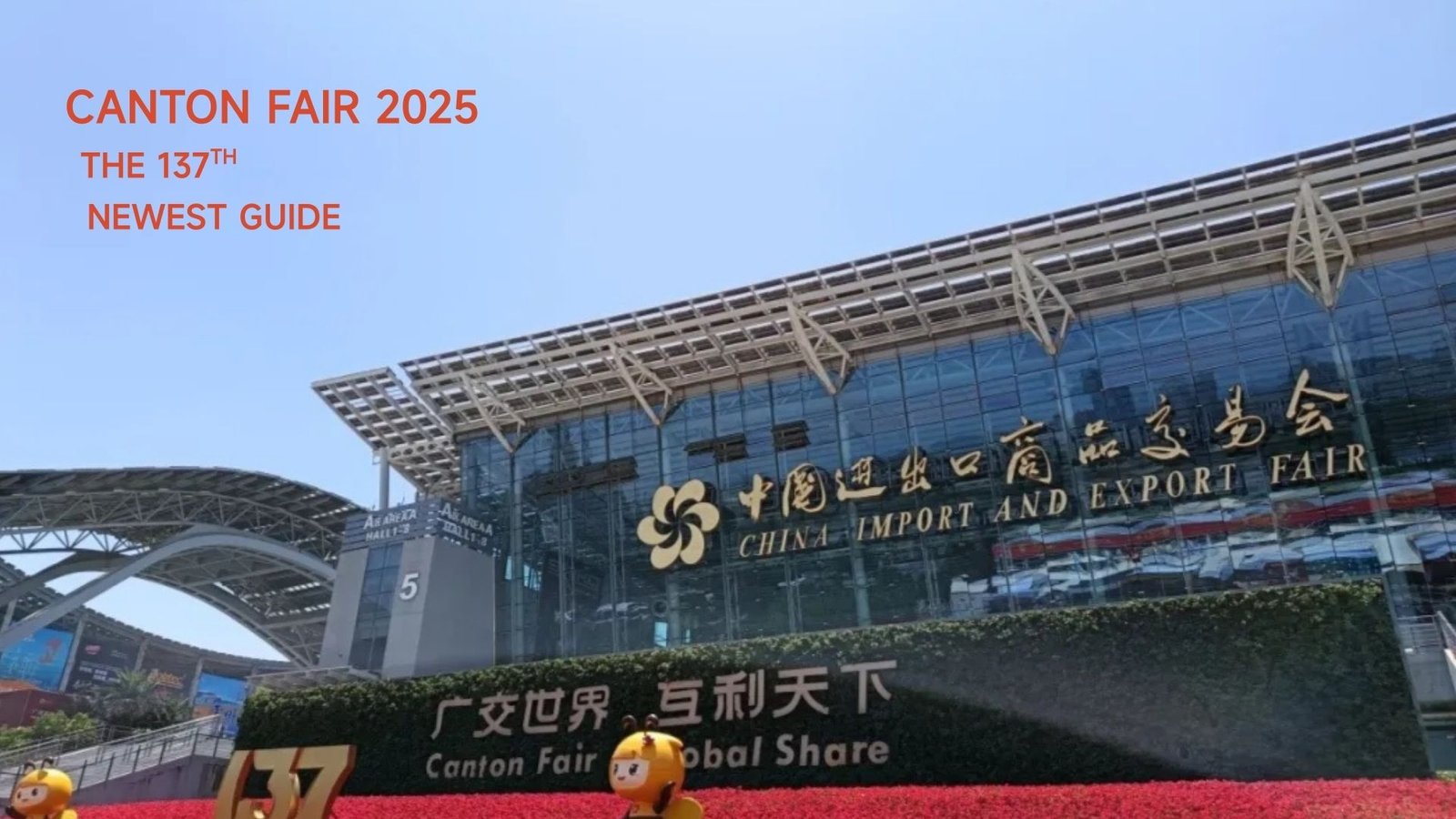Are you considering buy direct from China to boost your business? While the appeal of lower costs and vast manufacturing capabilities is hard to resist, not every product is a smart choice for importation. 🚫
The world of international trade can be a minefield for the unprepared. From heavy furniture to fragile glassware, and from counterfeit goods to regulated pharmaceuticals, certain items pose significant risks and challenges. 😰 These products can lead to logistical nightmares, legal troubles, or financial losses that could sink your business before it even sets sail.
In this comprehensive guide, we’ll explore the top categories of products that don’t make sense to buy direct from China. We’ll explain why these items are problematic and help you navigate the complexities of international sourcing. Whether you’re a seasoned importer or just starting out, understanding these pitfalls is crucial for making informed decisions and safeguarding your business. Let’s dive in and uncover the products you should think twice about before importing!
Why many businesses choose to buy direct from China
A. The advantages of wholesale products from China (low cost, large variety, customization)
Many businesses choose to buy direct from China due to several key advantages:
- Low cost: Chinese manufacturers often offer significantly lower prices compared to domestic suppliers.
- Large variety: The vast manufacturing capabilities in China provide access to a wide range of products.
- Customization: Chinese factories are often willing to accommodate custom orders and modifications.
However, recent changes in trade policies have impacted these advantages. The expansion of the de minimis exemption in 2016 increased the threshold for duty-free imports from $200 to $800. This change has allowed Chinese companies to exploit the system, circumventing tariffs and regulations by manipulating customs declarations and shipment sizes.
| Impact of De Minimis Exemption | Before 2016 | After 2016 |
|---|---|---|
| Duty-free threshold | $200 | $800 |
| Daily packages entering U.S. | Limited | 2+ million |
| Primary beneficiary | U.S. businesses | Chinese sellers |
B. The risks of importing the wrong products
Despite the advantages, importing from China carries significant risks:
- Unfair competition: Chinese sellers gain a competitive edge over U.S. businesses by avoiding tariffs and regulations.
- Counterfeit imports: The influx of duty-free packages increases the risk of counterfeit and unsafe goods entering the market.
- Trade imbalance: The abuse of the de minimis rule has contributed to a significant trade deficit with China.
C. Key factors that make a product unsuitable for direct import
Several factors can make certain products unsuitable for direct import from China:
- Regulatory compliance: Products subject to strict U.S. labor, environmental, and safety standards may not meet requirements when imported.
- National security concerns: Some Chinese technology firms have been added to U.S. export control lists due to potential military applications.
- Tariff implications: Recent tariff increases on Chinese imports have affected various product categories, particularly consumer electronics.
The “End China’s De Minimis Abuse Act” (H.R. 7979) aims to address these issues by implementing stricter regulations on de minimis imports and enhancing customs oversight for high-risk countries.
With these factors in mind, next, we’ll explore specific categories of “High-Risk and Low-Profit Products” that businesses should be cautious about when considering direct imports from China.

High-Risk and Low-Profit Products
Now that we’ve explored why many businesses choose to buy direct from China, let’s delve into a category of products that may not be ideal for importing: high-risk and low-profit items. While China offers numerous advantages for sourcing, certain products require careful consideration due to their inherent challenges.
A. Short shelf life and strict storage regulations
Products with short shelf lives and strict storage requirements pose significant risks when importing from China. These items often include:
- Perishable foods
- Certain pharmaceuticals
- Some cosmetics and personal care products
| Challenges | Risks |
|---|---|
| Limited time for transport | Spoilage or expiration |
| Complex storage needs | Quality degradation |
| Regulatory compliance | Legal issues and fines |
B. High shipping costs for refrigerated transport
Refrigerated transport, essential for many short-shelf-life products, adds substantial costs to the importing process:
- Specialized containers and equipment
- Higher fuel consumption
- Increased handling and monitoring requirements
These factors can significantly erode profit margins, making such products less viable for direct import from China.
C. Best alternative: Source locally for freshness and compliance
To mitigate the risks associated with high-risk and low-profit products, consider the following alternatives:
- Partner with local suppliers
- Establish domestic distribution networks
- Focus on products with longer shelf lives
- Invest in local production facilities
By sourcing these products locally, businesses can ensure:
- Fresher products
- Easier compliance with regulations
- Reduced transportation costs
- Quicker response to market demands
With this understanding of high-risk and low-profit products, let’s move on to another category that presents challenges when importing from China: heavy and bulky items such as furniture, construction materials, and large machinery.
Heavy & Bulky Items (Furniture, Construction Materials, Large Machinery)
Now that we’ve covered high-risk and low-profit products, let’s delve into another category that often proves challenging for those looking to buy direct from China: heavy and bulky items.
A. Expensive shipping and customs fees
When sourcing furniture, construction materials, or large machinery from China, the shipping costs can quickly erode any potential savings. These items often require:
- Specialized shipping containers
- Additional handling equipment
- More complex customs documentation
| Item Type | Shipping Challenges |
|---|---|
| Furniture | Fragility, size, weight |
| Construction Materials | Weight, volume, hazardous material regulations |
| Large Machinery | Specialized packaging, heavy-lift equipment |
B. Storage and logistics challenges
Importing bulky items presents significant logistical hurdles:
- Increased warehouse space requirements
- Higher inventory carrying costs
- Complex handling and transportation needs
These factors can substantially impact your overall operational expenses, potentially offsetting the initial cost savings from buying direct from China.
C. Best alternative: Buy direct from China factory only for high-value custom orders
Despite the challenges, there are situations where importing heavy and bulky items directly from Chinese factories can be advantageous:
- Custom-made, high-value products
- Large-scale projects requiring specific specifications
- Unique items not readily available domestically
In these cases, working directly with a Chinese manufacturer can offer:
- Greater control over product specifications
- Potential for significant cost savings on large orders
- Access to specialized manufacturing capabilities
However, it’s crucial to conduct thorough due diligence when selecting a supplier. This includes:
- Verifying the supplier’s business license and registered capital
- Checking for relevant certifications (ISO 9001, environmental compliance)
- Requesting and validating product certificates and test reports
- Conducting factory audits, either personally or through a trusted agent
By carefully vetting potential partners and considering the total cost of ownership, you can make informed decisions about whether importing heavy and bulky items from China is truly beneficial for your business.
With these considerations in mind, we’ll next explore the challenges associated with importing fragile and easily damaged products from China.
Fragile & Easily Damaged Products (Glassware, Porcelaain, High-End Electronics)

Now that we’ve discussed heavy items, let’s turn our attention to another category of products that pose challenges when importing from China: fragile and easily damaged goods.
High risk of breakage during transit
Fragile items like glassware, porcelain, and high-end electronics are particularly susceptible to damage during the long journey from Chinese factories to their final destination. The multiple handling stages, including packaging, loading, transportation, and unloading, significantly increase the risk of breakage. This vulnerability makes these products less suitable for direct importation from China, especially for small to medium-sized businesses.
Expensive insurance and replacement costs
When dealing with delicate products, importers often face:
- Higher insurance premiums to cover potential losses
- Increased shipping costs due to special packaging requirements
- Substantial replacement expenses for damaged goods
These additional costs can quickly erode profit margins, making fragile items less economically viable for import. Consider the following comparison:
| Factor | Fragile Products | Durable Products |
|---|---|---|
| Insurance Cost | High | Low to Moderate |
| Packaging Expense | Expensive (Special materials) | Standard |
| Replacement Rate | Higher | Lower |
| Overall Risk | Significant | Manageable |
Best alternative: Select cheap products from China that are durable and well-packaged
To mitigate these risks, importers should focus on:
- Durable alternatives to fragile items
- Products with robust packaging solutions
- Items that can withstand the rigors of international shipping
By selecting products that are less prone to damage, businesses can:
- Reduce overall import costs
- Minimize the need for expensive insurance
- Lower the likelihood of customer dissatisfaction due to damaged goods
When sourcing from China, it’s crucial to work closely with suppliers to ensure proper packaging and handling procedures are in place. Consider engaging quality control services like Sofeast Limited or QIMA to conduct thorough inspections throughout the production process, including pre-shipment checks to verify product integrity and packaging quality.
With these considerations in mind, next, we’ll explore the challenges associated with regulated and legally restricted imports, which present a different set of obstacles for businesses sourcing from China.
Regulated & Legally Restricted Imports
Now that we’ve covered fragile items, let’s delve into another critical category of products that may not be suitable for direct importation from China: regulated and legally restricted imports.
Understanding Import Regulations
When sourcing products from China, it’s crucial to be aware of the complex system of tariffs, duties, and taxes that govern imports. These regulations significantly impact the total cost and feasibility of importing certain goods:
- Import tariffs: Range from 0% to 35%, based on the product’s Harmonized System (HS) code
- Duties: Typically between 5% and 25%, calculated on the CIF (Cost, Insurance, and Freight) value
- Value-Added Tax (VAT): 13% applied to the product’s value plus duties
Navigating Customs and Tax Regulations
China Customs and the State Taxation Administration enforce these regulations rigorously. Importers must:
- Ensure accurate classification of goods using HS codes
- Stay updated on tariff changes (e.g., duty reductions for certain electronics in 2025)
- Be aware of additional taxes like consumption tax for luxury items and tobacco
Strategies to Minimize Import Costs
| Strategy | Description |
|---|---|
| Leverage Free Trade Agreements (FTAs) | Reduce or eliminate tariffs for eligible products |
| Utilize Free Trade Zones (FTZs) | Defer customs duties |
| Consult customs brokers | Ensure compliance and accurate cost calculations |
Potential Pitfalls
Mistakes in importing regulated goods can lead to significant financial repercussions:
- Misclassifying goods
- Failing to stay updated on tariff changes
- Incorrect calculation of total import costs
Navigating Logistics for Regulated Imports
When dealing with regulated imports, consider using specialized logistics services that offer:
- Customs clearance assistance
- Warehousing and consolidation options
- Export license procurement for Chinese factories
These services can help streamline the process and ensure compliance with import regulations.
With this understanding of regulated and legally restricted imports, we’ll next explore the specific challenges associated with importing pharmaceuticals and medical equipment from China.
Pharmaceuticals & Medical Equipment

Strict import restrictions (FDA, CE, local health regulations)
Importing pharmaceuticals and medical equipment directly from China is fraught with challenges due to stringent regulations. The FDA in the United States, CE marking in Europe, and local health authorities worldwide impose strict controls on these products. These regulations are designed to ensure safety, efficacy, and quality standards are met.
| Regulatory Body | Jurisdiction | Key Requirements |
|---|---|---|
| FDA | United States | Pre-market approval, Good Manufacturing Practices (GMP) |
| CE Marking | European Union | Technical documentation, conformity assessment |
| Local Health Authorities | Various Countries | Country-specific certifications, licenses |
Legal risks and compliance challenges
Importing pharmaceuticals and medical equipment directly from China exposes businesses to significant legal risks and compliance hurdles:
- Product liability issues
- Intellectual property infringements
- Non-compliance with labeling and packaging requirements
- Potential for counterfeit or substandard products
Best alternative: Work with licensed distributors instead of direct imports
Given the complexities involved, it’s advisable to work with licensed distributors rather than attempting direct imports. Benefits include:
- Compliance expertise
- Established supply chains
- Quality assurance processes
- Reduced legal exposure
Licensed distributors navigate the regulatory landscape more effectively, ensuring that products meet all necessary standards before reaching the market. This approach minimizes risks while still allowing businesses to benefit from competitive pricing and product availability.
Counterfeit & Trademarked Products (Branded Clothing, Luxury Goods, Electronics)
Now that we’ve explored the risks associated with importing pharmaceuticals and medical equipment, let’s turn our attention to another category of products that can be problematic when sourcing from China: counterfeit and trademarked goods.
High risk of customs seizure and lawsuits
Importing counterfeit or trademarked products from China poses significant risks:
- Strict customs regulations: Chinese Customs comprises 47 direct branches and 678 offices, employing around 100,000 officers dedicated to enforcing trade laws.
- Potential seizures: Products suspected of infringing on trademarks or copyrights are likely to be confiscated at the border.
- Legal consequences: Importers may face lawsuits from brand owners, resulting in hefty fines and legal fees.
Reputation damage for selling fake goods
| Consequences | Impact on Business |
|---|---|
| Loss of customer trust | Decreased sales and loyalty |
| Negative reviews | Reduced online visibility |
| Brand damage | Long-term impact on business growth |
Best alternative: Source private label products from China or work with authorized suppliers
To mitigate risks associated with counterfeit goods, consider these alternatives:
- Private label products:
- Develop your own brand
- Work with Chinese manufacturers to create unique products
- Avoid trademark infringement issues
- Authorized suppliers:
- Partner with licensed distributors in China
- Ensure authenticity and legal compliance
- Benefit from established supply chains
- Utilize import agents:
- Engage professionals with expertise in Chinese sourcing
- Verify supplier credentials and product authenticity
- Navigate complex customs procedures
By focusing on these alternatives, you can build a sustainable import business while avoiding the pitfalls of counterfeit and trademarked products. With this in mind, next, we’ll explore another high-risk category: weapons, firearms, and military gear.
Weapons, Firearms, & Military Gear
Strict government regulations and export controls
Importing weapons, firearms, and military gear from China is subject to stringent government regulations and export controls. These items are considered high-risk and are heavily monitored by customs and border protection agencies. The following table outlines some key regulations:
| Regulation Type | Description |
|---|---|
| ITAR | International Traffic in Arms Regulations |
| EAR | Export Administration Regulations |
| ATF | Bureau of Alcohol, Tobacco, Firearms and Explosives regulations |
Requires special permits and legal compliance
Obtaining the necessary permits for importing weapons and military gear is a complex process:
- Federal Firearms License (FFL)
- Import permits from the U.S. Department of State
- Compliance with the National Firearms Act (NFA)
- End-user certificates
Failure to comply with these regulations can result in severe penalties, including fines and imprisonment.
Best alternative: Focus on legal self-defense tools and accessories
Instead of risking legal issues with weapons imports, consider these alternatives:
- Non-lethal self-defense items (pepper spray, personal alarms)
- Tactical gear (backpacks, holsters, clothing)
- Hunting and outdoor equipment
- Airsoft and paintball accessories
These products often have fewer restrictions and can still cater to the self-defense and outdoor enthusiast markets. When sourcing from China, always verify the legality of imports and consult with a customs broker to ensure compliance with all regulations.
Outdated & Technologically Complex Products
Obsolete Electronics (Old Smartphones, CRT TVs, DVD Players)
When considering products to import from China, it’s crucial to steer clear of outdated electronics. These items not only have limited market demand but also pose significant risks in terms of quality and functionality.
| Product Type | Risks | Market Demand |
|---|---|---|
| Old Smartphones | Compatibility issues, security vulnerabilities | Very low |
| CRT TVs | Outdated technology, energy inefficient | Almost non-existent |
| DVD Players | Superseded by streaming services | Declining rapidly |
Importing these obsolete electronics can lead to:
- Difficulty in selling due to lack of consumer interest
- Potential legal issues if devices don’t meet current safety standards
- High storage costs as unsold inventory accumulates
- Negative impact on your business reputation
Unverified Tech Gadgets (Cheap Unbranded Electronics, Knockoff Devices)
While the allure of cheap, unbranded electronics from China might seem tempting, these products often come with a host of problems:
- Poor quality control leading to high failure rates
- Lack of customer support or warranty
- Potential safety hazards due to substandard components
- Risk of intellectual property infringement
Instead of focusing on these risky products, consider sourcing more current and reputable electronics that have a proven market demand. This approach will help you build a sustainable import business and maintain customer trust.
Obsolete Electronics (Old Smartphones, CRT TVs, DVD Players)

A. Low market demand and rapid depreciation
When considering importing electronics from China, it’s crucial to understand the risks associated with obsolete technology. Old smartphones, CRT TVs, and DVD players fall into this category, facing significant challenges in the market:
- Limited consumer interest
- Rapid value decline
- Difficulty in selling
| Product | Market Demand | Depreciation Rate |
|---|---|---|
| Old Smartphones | Very Low | High |
| CRT TVs | Almost None | Extreme |
| DVD Players | Declining | Moderate to High |
B. High return rates and unsold inventory
Importing obsolete electronics often leads to:
- Frequent customer returns due to dissatisfaction
- Accumulation of unsold stock
- Storage costs eating into profits
- Potential loss on initial investment
C. Best alternative: Sourcing products from China that follow the latest tech trends
Instead of focusing on outdated technology, consider:
- Smart home devices
- Wearable tech
- Eco-friendly gadgets
- Innovative mobile accessories
These products align with current market demands and offer better potential for profit when sourcing from China. By staying up-to-date with tech trends, you can maximize your chances of success in the competitive electronics market.
Unverified Tech Gadgets (Cheap Unbranded Electronics, Knockoff Devices)
High defect rates and lack of after-sales support
When considering unverified tech gadgets from China, it’s crucial to understand the risks associated with these products. One of the most significant issues is the high defect rate. Many cheap, unbranded electronics and knockoff devices fail to meet quality standards, leading to frequent malfunctions and short lifespans.
| Issue | Consequence |
|---|---|
| High defect rate | Frequent product failures |
| Lack of quality control | Inconsistent performance |
| No warranty | No recourse for faulty items |
| Absent customer support | Frustration for end-users |
The lack of after-sales support compounds these problems. Unlike reputable manufacturers, sellers of unverified tech gadgets often disappear after the sale, leaving customers with no recourse for defective products.
Negative customer reviews and increased refund rates
The consequences of importing unverified tech gadgets extend beyond initial product failures:
- Dissatisfied customers leave negative reviews
- Brand reputation suffers
- Increased refund requests eat into profits
- Time and resources wasted on customer complaints
These factors can quickly erode any cost savings gained from buying cheap, unbranded electronics directly from China.
Best alternative: buy direct from China with verified quality control standards
To mitigate these risks while still benefiting from competitive prices, consider sourcing from Chinese manufacturers with:
- Established quality control processes
- Proper certifications (e.g., ISO, CE)
- Verifiable track records
- Clear warranty and return policies
By focusing on verified suppliers, you can buy direct from China factory sources while ensuring product reliability and customer satisfaction.
Unsafe & Environmentally Questionable Products
Hazardous Materials (Chemical Substances, Toxic Goods, Batteries)
When considering products to import from China, it’s crucial to steer clear of unsafe and environmentally questionable items. Hazardous materials, including chemical substances, toxic goods, and batteries, pose significant risks and challenges for importers.
Types of Hazardous Materials to Avoid
| Material Type | Examples | Risks |
|---|---|---|
| Chemical Substances | Industrial solvents, pesticides | Health hazards, environmental damage |
| Toxic Goods | Lead-based products, mercury-containing items | Poisoning, long-term health effects |
| Batteries | Lithium-ion, nickel-cadmium | Fire hazards, environmental pollution |
Reasons to Avoid Importing Hazardous Materials:
- Strict Regulations: Many countries have stringent laws governing the import of hazardous materials.
- Safety Concerns: These products can pose serious risks to human health and safety.
- Environmental Impact: Improper disposal can lead to severe environmental damage.
- Liability Issues: Importers may be held responsible for any accidents or damages caused by these products.
- High Shipping Costs: Special handling and transportation requirements increase expenses.
Alternatives to Consider:
- Eco-friendly alternatives to chemical products
- Rechargeable batteries from reputable manufacturers
- Non-toxic substitutes for hazardous goods
By avoiding these unsafe and environmentally questionable products when sourcing from China, importers can protect themselves, their customers, and the environment while maintaining a sustainable business model. Instead, focus on sourcing products that meet safety standards and environmental regulations to build a responsible and profitable import business.
Hazardous Materials (Chemical Substances, Toxic Goods, Batteries)
A. Strict environmental laws and disposal issues
Importing hazardous materials from China comes with significant challenges due to strict environmental regulations and disposal requirements. Many countries have implemented rigorous laws to protect public health and the environment, making it difficult and costly to import chemical substances, toxic goods, and batteries.
- Environmental regulations:
- REACH (EU)
- TSCA (USA)
- CEPA (Canada)
These laws often require extensive documentation, testing, and compliance measures, increasing the complexity and cost of importation.
B. Special handling and import licenses required
Importing hazardous materials necessitates special handling procedures and specific import licenses. This process can be time-consuming and expensive, deterring many businesses from pursuing this route.
| Requirement | Description |
|---|---|
| Import License | Specific permit for hazardous materials |
| Safety Data Sheets | Detailed information on chemical properties |
| Packaging Certification | Proof of proper containment |
| Transportation Insurance | Coverage for potential accidents |
C. Best alternative: Buy direct from China factory for eco-friendly products
Instead of importing hazardous materials, consider sourcing eco-friendly alternatives directly from Chinese manufacturers. This approach aligns with global sustainability trends and reduces regulatory hurdles.
Benefits of eco-friendly sourcing:
- Easier compliance with import regulations
- Lower risk of environmental penalties
- Positive brand image for sustainability-conscious consumers
- Reduced disposal and handling costs
By focusing on environmentally friendly products when you buy direct from China factory, you can streamline your import process and contribute to a more sustainable supply chain.
Fast Fashion & Poor-Quality Clothing
Oversaturated market with low-profit margins
The fast fashion industry has become increasingly competitive, leading to an oversaturated market with razor-thin profit margins. Importing low-quality clothing from China may seem attractive due to low initial costs, but the long-term viability is questionable.
| Factor | Impact on Profit Margins |
|---|---|
| Market Saturation | Increased competition, lower prices |
| Quality Issues | Higher return rates, customer dissatisfaction |
| Shipping Costs | Eat into already slim margins |
| Currency Fluctuations | Can erode profits unexpectedly |
Increasing bans on unethical and unsustainable production
Many countries are implementing stricter regulations on fast fashion imports, focusing on environmental impact and labor practices. This trend makes importing poor-quality clothing from China increasingly risky and potentially illegal.
- Environmental concerns: Non-biodegradable materials, high water usage
- Labor issues: Poor working conditions, low wages
- Regulatory challenges: Increasing import restrictions, tariffs on fast fashion
Best alternative: Sourcing products from China with sustainable materials and ethical practices
While fast fashion may be problematic, China still offers opportunities for sourcing quality clothing. The key is to focus on suppliers who prioritize sustainability and ethical practices.
- Look for manufacturers using organic or recycled materials
- Verify fair labor practices and certifications
- Consider higher-quality, longer-lasting garments for better customer satisfaction
By shifting focus to sustainable and ethical production, businesses can build a more resilient supply chain and meet growing consumer demand for responsible fashion. This approach aligns with global trends and helps ensure long-term viability in the competitive clothing market.
Conclusion
Not all Chinese products from China are good for direct import
While China offers a vast array of products for import, it’s crucial to understand that not every item is suitable for direct purchasing. Some products carry significant risks or challenges that can outweigh potential profits. Here’s a quick overview of product categories to avoid:
| High-Risk Categories | Reasons to Avoid |
|---|---|
| Heavy & Bulky Items | High shipping costs, potential damage |
| Fragile Products | Increased risk of breakage during transport |
| Regulated Imports | Legal complications, strict import restrictions |
| Counterfeit Goods | Legal issues, brand infringement risks |
| Hazardous Materials | Safety concerns, shipping restrictions |
Avoid high-risk categories with legal, logistical, and quality concerns
When sourcing products from China, it’s essential to steer clear of items that pose:
- Legal risks (e.g., counterfeit goods, restricted imports)
- Logistical challenges (e.g., oversized furniture, delicate glassware)
- Quality issues (e.g., fast fashion, unverified tech gadgets)
Focus on wholesale products from China that have strong market demand
Instead of risky imports, concentrate on sourcing products that:
- Have proven market demand in your target region
- Comply with local regulations and safety standards
- Offer a good balance between quality and affordability
- Are easy to transport and store
By focusing on these aspects, you can maximize the benefits of buy direct from China while minimizing potential risks and challenges.
The following websites will help you buy direct from China, and the following article will guide you step by step on how to buy from China directly, saving costs and starting your own business.
Alibaba Blog: https://www.alibaba.com
Global Sources Blog: https://www.globalsources.com/NEWS
Made-in-China Blog: https://www.made-in-china.com
Statista: https://www.statista.com/




